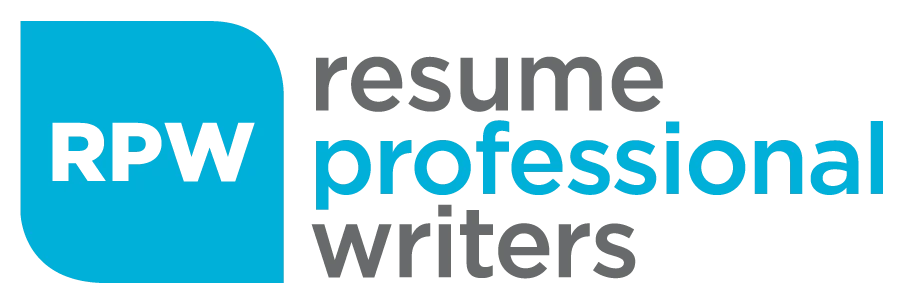In today’s competitive job market, visual tools have become indispensable for career growth. At Resume Professional Writers, we’ve seen firsthand how career development infographics can transform the way professionals plan and present their career journeys.
This visual guide will explore the power of career mapping, infographics, and visual resumes in shaping your professional future. Get ready to discover innovative ways to visualize your career path and stand out in the job market.
How to Map Your Career Path
Understanding Career Mapping
Career mapping is a visual tool that helps professionals plan their professional journey. It involves creating a visual representation of career goals, milestones, and necessary steps to achieve them. This process provides clarity on career trajectory and aids in making informed decisions about professional development.
Creating Your Career Map
To start your career map, identify your long-term career goals. Envision where you want to be in 5, 10, or 20 years. Work backwards to determine the milestones and skills you’ll need to acquire. Include both vertical progression (promotions) and horizontal moves (skill development or industry shifts) in your map.
A comprehensive career map should include:
- Your current position
- Short-term goals (1-2 years)
- Medium-term goals (3-5 years)
- Long-term goals (5+ years)
- Skills and qualifications needed for each step
- Potential obstacles and strategies to overcome them
Benefits of Visual Career Planning
Visual career planning offers numerous advantages. It provides a clear overview of your career path, making it easier to track progress and stay motivated. A study by the University of California found that people who visualize their goals are 1.2 to 1.4 times more likely to achieve them than those who don’t.
A visual career plan also helps identify skill gaps and areas for improvement. This awareness allows you to proactively seek out learning opportunities and stay competitive in your field. It also serves as a valuable tool when discussing your career aspirations with mentors or potential employers.
Tools for Effective Career Mapping
Several digital tools can help you create and maintain your career map. Mind mapping software like MindMeister or Coggle allows you to create flexible, interconnected diagrams of your career path. For a more structured approach, project management tools like Trello or Asana can be adapted to track career milestones and tasks.
For those who prefer a hands-on approach, large whiteboards or poster boards can be excellent for creating physical career maps. These tangible representations serve as constant reminders of your goals and can be easily updated as your career progresses.
🔍 Think Your Resume’s Fine? Let’s Double-Check That
Even strong resumes can miss critical details—especially when it comes to passing Applicant Tracking Systems (ATS). Our specialists offer a free review to uncover gaps, improve formatting, and ensure your resume is ATS-ready and recruiter-friendly.
A combination of digital and physical tools often creates the most comprehensive career maps. Expert writers (like those at Resume Professional Writers) can help translate your career map into a compelling narrative for your resume, ensuring that your application materials align perfectly with your long-term career goals.
As we move forward, let’s explore how infographics can further enhance your career development strategy and make your professional journey even more visually appealing and impactful.

Infographics That Boost Your Career
The Power of Visual Storytelling
Infographics have transformed the presentation of complex information, particularly in career development. A study by the Social Science Research Network revealed that 65% of people are visual learners, making infographics an ideal tool for career planning and job searching.
Crafting Your Professional Narrative
Career infographics convert your professional story into a compelling visual narrative. They showcase your skills, experiences, and achievements in an easily digestible format. A Hubspot report indicates that infographics receive 3x more likes and shares on social media than other content types, enhancing their effectiveness for personal branding.
When you create a career infographic, focus on key milestones, quantifiable achievements, and skills relevant to your target role. For instance, a sales professional might design a timeline infographic displaying progression from entry-level to management, with data points highlighting sales growth at each stage.
Diverse Infographic Styles for Career Enhancement
Different infographic styles serve various career development purposes:
- Timeline infographics: Illustrate career progression
- Comparison infographics: Demonstrate before-and-after scenarios of projects
- Pie charts or bar graphs: Show distribution of skills or time spent on responsibilities
For job seekers, a “skills snapshot” infographic can be a powerful addition to application materials, helping candidates stand out among text-heavy resumes.
Creating Impactful Career Infographics
To create an effective career infographic:
- Define a clear goal (e.g., showcasing career journey, highlighting skills, presenting project success)
- Gather relevant data and statistics to support your narrative
- Choose a design aligning with your professional brand and industry
Tools like Canva, Piktochart, or Venngage offer user-friendly interfaces and templates for professional-looking infographics. However, if design isn’t your forte, consider professional services to ensure your infographic makes the right impression.
Try to keep your infographic clean and uncluttered. Use a consistent color scheme and limit yourself to 2-3 fonts. Ensure that the information flows logically and tells a coherent story about your career.
Infographics aren’t limited to online use. They can enhance your portfolio, presentations, or serve as leave-behinds after interviews. By incorporating infographics into your career development strategy, you create a memorable visual brand that distinguishes you in the job market.
As we transition from static infographics to dynamic visual resumes, let’s explore how these innovative formats are reshaping the job application process and helping candidates make lasting impressions on potential employers.

How Visual Resumes Transform Your Job Search
The Rise of Visual Resumes
Visual resumes have revolutionized the job application process. These innovative formats combine traditional resume content with eye-catching design elements to create a memorable first impression. A study by TheLadders revealed that recruiters spend an average of just 7.4 seconds reviewing a resume. Visual resumes capitalize on this brief window, quickly conveying key information and setting candidates apart.
Crafting an Effective Visual Resume
The most impactful visual resumes strike a balance between creativity and professionalism. They highlight key achievements, skills, and experiences through strategic use of color, icons, and data visualization. A survey by Jobvite found that 65% of recruiters value creative resumes for non-design positions, indicating the growing acceptance of visual formats across industries.
When you create a visual resume, focus on these key elements:
- A clear hierarchy of information
- Consistent branding that aligns with your industry
- Quantifiable achievements presented through charts or graphs
- A clean, uncluttered layout that guides the reader’s eye
You must tailor your visual resume to your target industry. While a graphic designer might use bold colors and unique layouts, a finance professional should opt for a more conservative design with subtle visual elements.
Tools for Creating Standout Visual Resumes
Numerous online platforms have emerged to help job seekers create professional visual resumes. Canva and Visme offer user-friendly interfaces with customizable templates. For those seeking more advanced features, Adobe InDesign provides powerful design capabilities.
However, creating a truly effective visual resume requires more than just design skills. It demands a deep understanding of industry expectations, ATS requirements, and strategic personal branding. This is where professional services like Resume Professional Writers excel. Their team of expert writers and designers collaborate to create visually stunning resumes that not only catch the eye but also effectively communicate your professional value.
Considerations for Visual Resumes
While visual resumes can be powerful, they’re not suitable for every situation. Many applicant tracking systems (ATS) struggle with heavily designed documents. A report by Jobscan indicates that 98% of Fortune 500 companies use ATS, making it essential to have both a visually appealing version and a plain-text ATS-friendly version of your resume.
As the job market evolves, visual resumes become increasingly important tools for standing out. The thoughtful incorporation of visual elements into your resume can create a compelling narrative of your professional journey and increase your chances of landing your dream job.

Elevating Your Career Mapping with Cutting-Edge Visual Tools
Visual tools are revolutionizing career development by providing professionals with dynamic ways to plan, present, and advance in their careers. Whether through career mapping, infographics, or visual resumes, these tools offer clarity and enhance communication, giving job seekers a competitive edge. By helping professionals identify goals, track progress, and stay motivated, these strategies are invaluable throughout the career journey.
Infographics, in particular, effectively highlight skills, achievements, and experiences in a visually compelling and easily digestible format. When incorporated into resumes, these visual elements leave lasting impressions on potential employers, boosting visibility and increasing interview opportunities. By positioning professionals for long-term success, these tools are indispensable in today’s increasingly visual world.
Incorporating visual tools into career development not only enhances personal branding but also strengthens engagement with employers. By clearly conveying unique value and simplifying complex career paths, professionals can stand out and make a lasting impression. Embracing these strategies is essential to thriving in a job market that increasingly favors visual communication.

Turn Your Career Goals to Reality with Resume Professional Writers
Career mapping and visual tools can be game-changers for your career development strategy. By creating a visual representation of your career path, you gain valuable clarity on your goals, track your progress effectively, and stay motivated. Career mapping allows you to outline your desired career trajectory, identify key milestones, and plan actionable steps to reach your objectives. Coupled with infographics and visual resumes, these tools enhance your job application by presenting your professional journey in a compelling and memorable way.
If you’re seeking a trusted ally in your job search, look no further than Resume Professional Writers. We specialize in crafting visually compelling narratives that transform your career journey into a standout resume. Our expert team excels at creating tailored, job-winning resumes that align with your career mapping strategies and industry standards. Whether you’re just starting out or an experienced executive, we have the expertise to help you shine in the competitive job market.
Elevate your career with our professional resume writing services and unlock your full potential!









